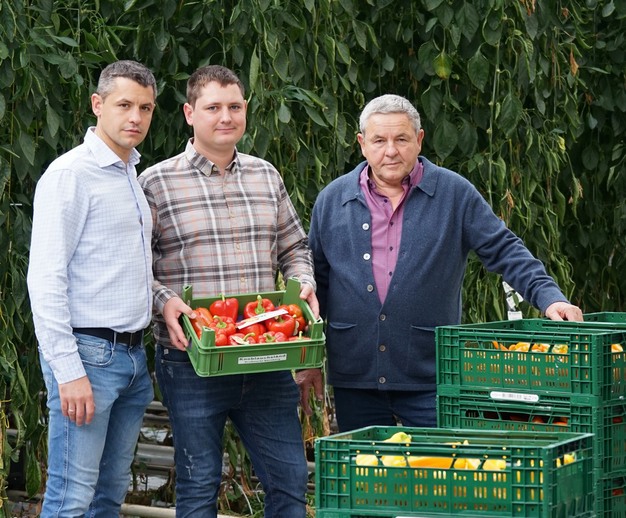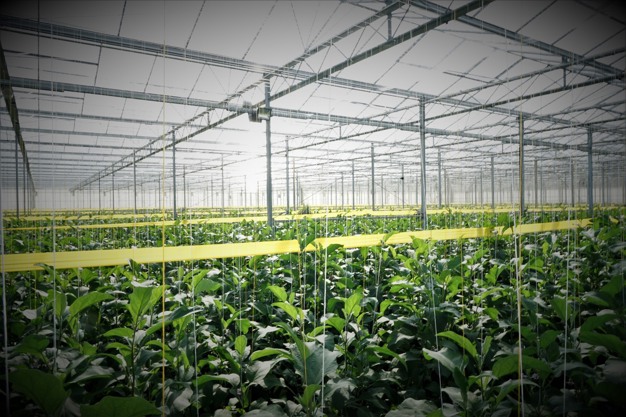With a total of three modern production sites and a total area of almost 40 hectares of greenhouse cultivation, Franconian family business Scherzer is one of the largest greenhouse vegetable producers in Germany. The product range extends from tomatoes, the largest product in terms of volume, to peppers, cucumbers, eggplants, and lettuce. At the start of the 2024 harvest, Managing Director Stefan Scherzer commented on this year's yield forecasts and the omnipresent topics such as cost increases and the importance of local greenhouse vegetables.

The first cucumbers, eggplants and small quantities of tomatoes were harvested before Easter. "The planting dates have shifted across all crops. Last year, in 2023, we planted and harvested our eggplants later. This year, we planted in week 2, so we were able to start harvesting almost identically to other years. With peppers, we start around week 13-14, with the first earlier set on around one hectare. Larger quantities are expected to hit the market from week 16," says Scherzer, describing the start of the season.
He also points to the lack of sunshine in the first quarter of the new year. "Compared to the year before, we had slightly less light. The winter was relatively mild, which was definitely beneficial for our crops, and January was still okay in terms of the amount of light. February, on the other hand, had very little sunshine. This will certainly mean that we will have relatively lower yields across all crops in the early part of the year. We already had a similar situation last year with the tomatoes: We were about 20 percent short in the early harvest compared to normal years."

High costs, low price levels
However, the significant additional costs in greenhouse cultivation are particularly worrying, Scherzer continues. "The cost increases are certainly hurting us. These are factors that we, as vegetable growers, unfortunately have little or no influence over. Not just labor costs, but also CO₂ taxes are having a major impact. Ultimately, these two cost drivers also mean that young plants and other supplies have become considerably more expensive on balance." According to Scherzer, there are minor differences in energy prices between the company's three production sites. "At the Feulersdorf site, we have a relatively new biomass heating plant, which is why we also have higher depreciation. At the Nuremberg site, on the other hand, we have an older plant and correspondingly lower costs."
In terms of price, 2024 is incomparable to last year's season. Scherzer: "For cucumbers, we are 40 percent below last year's levels, which is definitely too low from a producer's standpoint. In my opinion, that is also the big challenge we are facing: If imported vegetables are offered too cheaply and costs continue to rise, the gap will eventually widen too far. We are still lucky in Germany that many people have a good job and can actually afford regional vegetables. Nevertheless, the mood among both producers and consumers is rather subdued. There is a lack of willingness to buy. However, experience shows that this can change quickly. In any case, it is not due to the prices. After all, our products are far cheaper than last year, while sales are not much better. In this respect, the season could have started better."
Quality instead of quantity
According to Scherzer, the crops with the lowest yields are suffering the most from inflation and lower purchasing power. "We're talking about peppers or snack tomatoes, for example. The price difference between these crops and imported goods becomes too great, which ultimately means that we inevitably have to compete on quality. This in turn is reflected in our variety strategy: the focus is not so much on quantity, i.e., the yield per hectare, but rather on the quality and taste of the respective variety. The Jordan virus is still an important issue, particularly for tomatoes. We are still in the conversion phase and highly resistant (HR) varieties are constantly being tested. Ultimately, I also assume that there will be no more regular varieties in the medium to long term." Additionally, tomatoes are grown under lighting on around three hectares. "The capacity has remained almost constant in recent years. The market is there, but the question is how to make it cost-effective in the future."

Fiercely competitive bell pepper and eggplant market
In addition to cucumbers and tomatoes, Scherzer is also dedicated to the cultivation of regular and pointed peppers. Red peppers account for around 60 percent of production. The remaining 40 percent is accounted for by yellow and orange (approx. 20 percent each). With around ten production sites throughout Germany, domestic bell pepper cultivation is relatively limited, Scherzer confirms. "There have been no new bell pepper producers recently, which is not surprising given the big price difference compared to imported goods. In this respect, the bell pepper market is very competitive compared to the tomato market."
The same applies to eggplants, which Scherzer currently grows on around 2.5 hectares. "The market has developed quite well over the past decade. Nevertheless, we have to make sure that we can continue to produce regional eggplants at a reasonable price. If we are put on a par with imported goods in terms of price, regional eggplant cultivation will inevitably decline. At the moment, prices may be good for two weeks in August when there are few Dutch eggplants. But that's not enough for us. I think it's a shame, as eggplants are a great product and we can supply consistently high-quality, fresh produce." Scherzer has already removed the peppers from the range, as growing them was no longer profitable.
Wholesale market operations account for around 10 percent of turnover. Scherzer: "Due to the direct feedback from the customer, the wholesale market is a kind of pulse meter for us. However, it has to be said that wholesale market customers are tending to decline. It can therefore be assumed that the sales volume will not increase, but rather stagnate or decline."
Self-sufficiency needed for greenhouse vegetables
All in all, Scherzer is confident about the future. "The challenges are increasing in every respect. The demands on producers are only increasing, especially in terms of bureaucracy. Every year something new is added, and we are more or less forced to implement these requirements in practice. Nevertheless, we still have our purpose as regional producers. The required sales markets are definitely there. Now we have to convince the trade that we, as German growers, guarantee a certain degree of independence. If we no longer existed, Germany would be 100 percent dependent on imported goods. In comparison, we need a little more money on average, but this is due to the slightly different framework conditions in Germany. I am firmly convinced that if German production didn't exist, imported goods would certainly be more expensive. In this respect, we need a certain degree of self-sufficiency in Germany, and this must be guaranteed accordingly," he concludes.
For more information:
Andreas Scherzer
Scherzer Gemüse![]()
Kriegerlindenstraße 3
90427 Nuremberg (Zentrale)
Tel.: 0911-310 466 0
Fax: 0911-310 466 90
[email protected]
https://scherzer-gemuese.de
